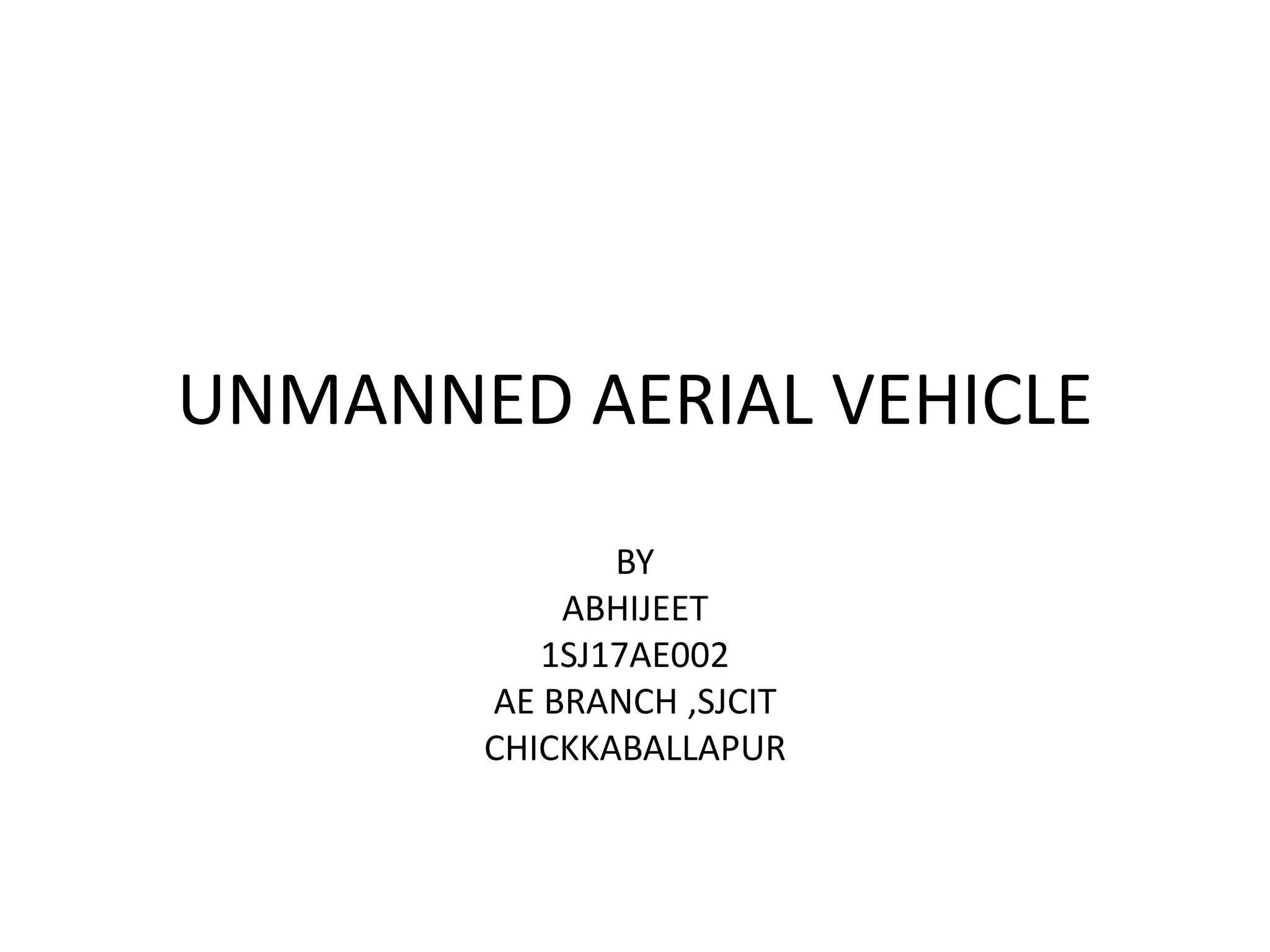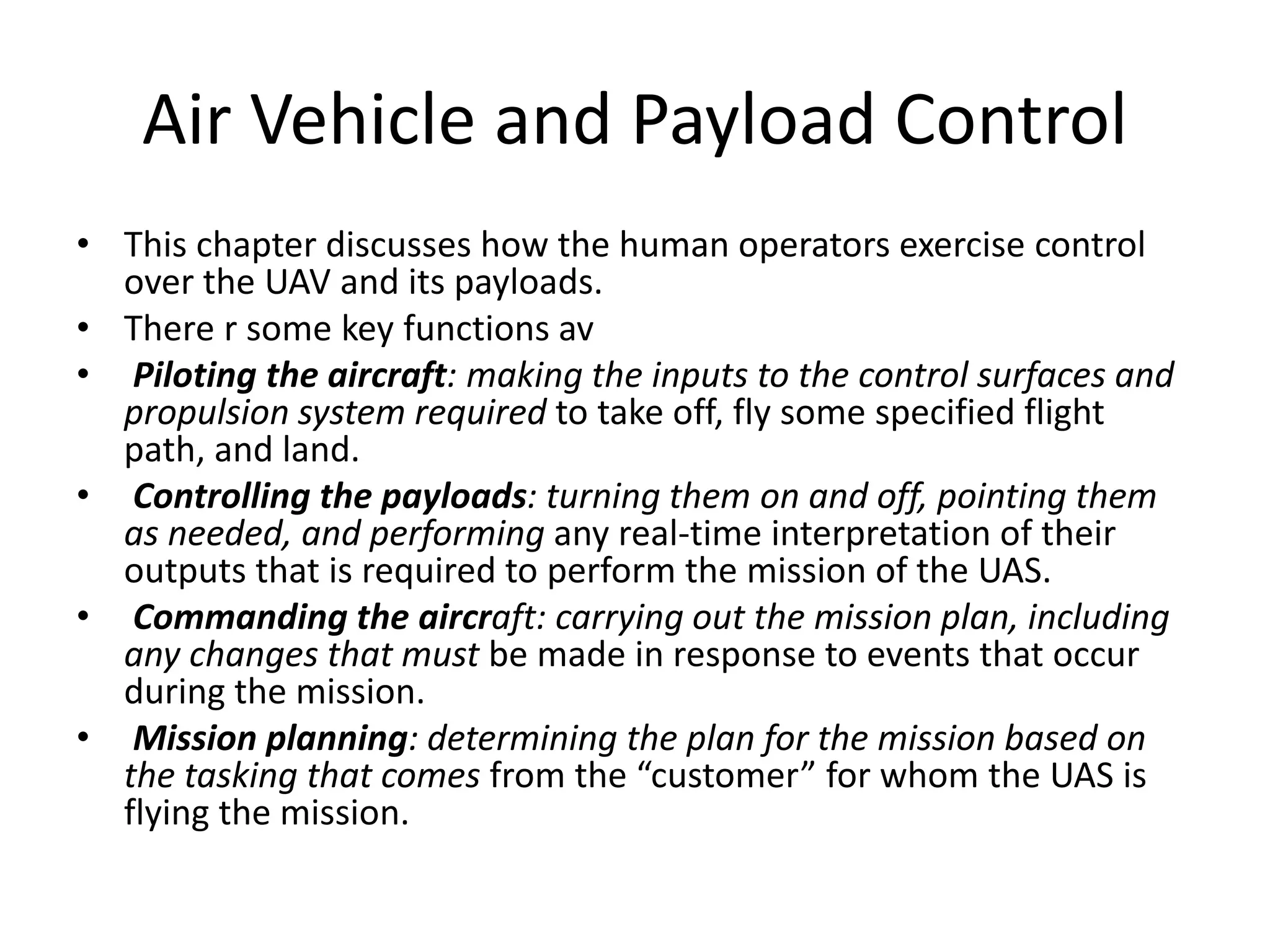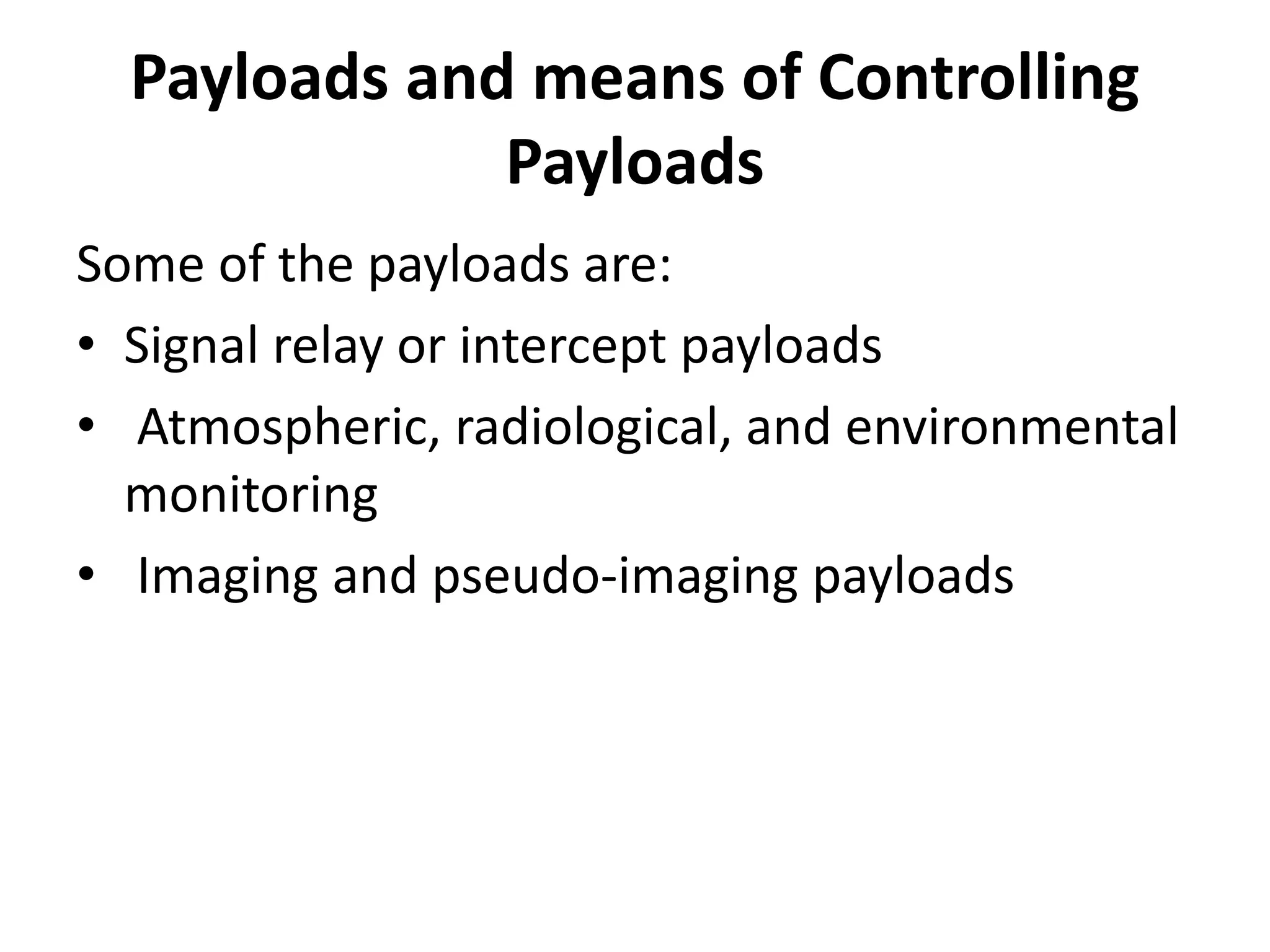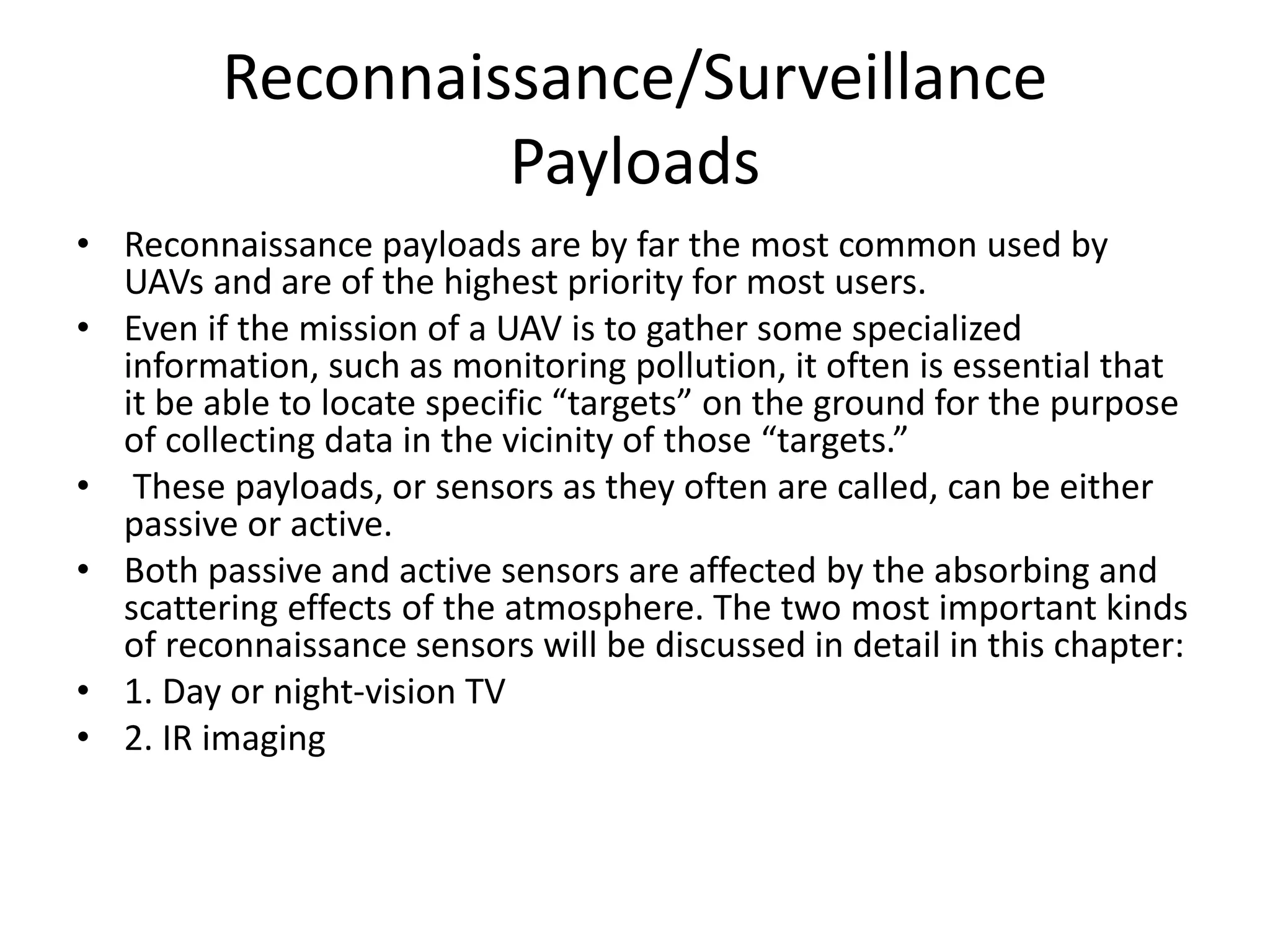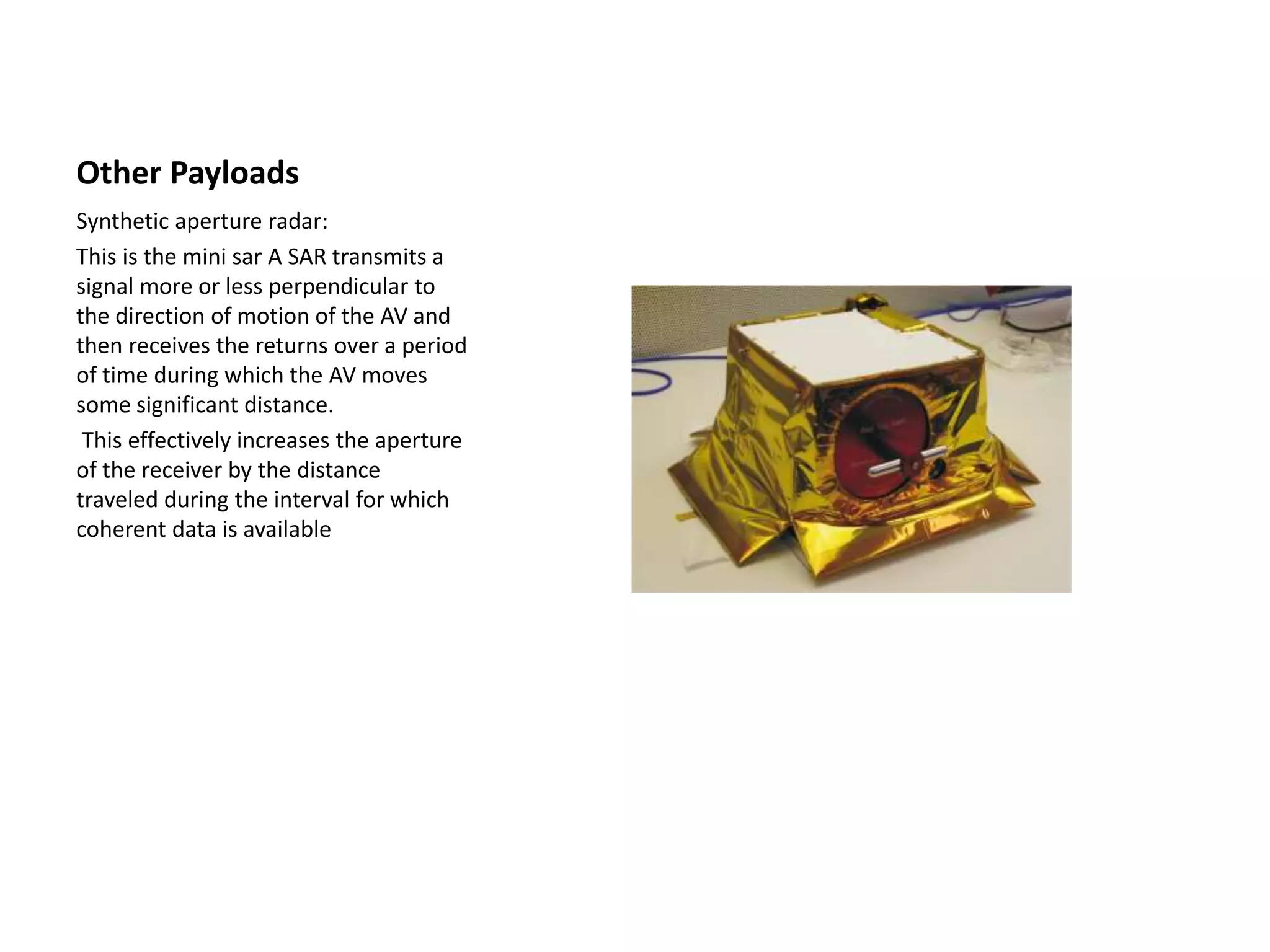The document discusses unmanned aerial vehicles (UAVs) and the operator's control over aircraft and payloads, outlining key functions such as piloting, mission planning, and controlling payloads. It describes various control modes, payload types for reconnaissance and warfare, including imaging and sensor technologies, and the importance of detection, recognition, and identification in operations. Additionally, the text highlights design issues related to UAVs, including payload capabilities and the advantages of using UAVs for diverse applications compared to traditional satellites.
